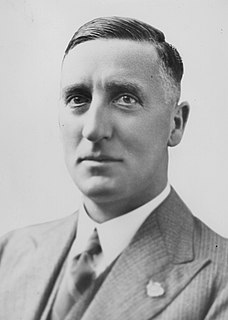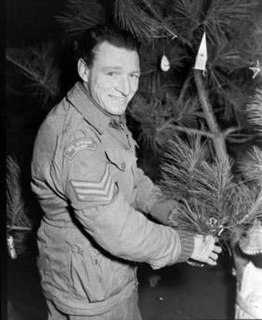 W
WPercy Charles Herbert Black, was a decorated Australian soldier who served with the Australian Imperial Force in the First World War.
 W
WWalter Ernest Brown, was an Australian recipient of the Victoria Cross, the highest award for gallantry in the face of the enemy that can be awarded to members of the British and Commonwealth forces. He was born in Tasmania and worked as a grocer before enlisting in the Australian Army in 1915, following the outbreak of First World War. Initially he was sent to Egypt where he served in the Australian Service Corps before being transferred to the Western Front where he served in the infantry with the 20th Battalion. In July 1918, during the fighting at Villers-Bretonneux he single-handedly destroyed a German machine-gun post, taking a number of prisoners in the process. For this act he was awarded the Victoria Cross. He was also later awarded the Distinguished Conduct Medal for a previous act of bravery.
 W
WMaurice Vincent Buckley, was an Australian soldier serving under the pseudonym Gerald Sexton who was awarded the Victoria Cross during the First World War. This is the highest award for gallantry in the face of the enemy that can be awarded to British and Commonwealth forces.
 W
WThomas Currie "Diver" Derrick, was an Australian soldier and a recipient of the Victoria Cross, the highest decoration for gallantry "in the face of the enemy" awarded to members of the British and Commonwealth armed forces. In November 1943, during the Second World War, Derrick was awarded the Victoria Cross for his assault on a heavily defended Japanese position at Sattelberg, New Guinea. During the engagement, he scaled a cliff face while under heavy fire and silenced seven machine gun posts, before leading his platoon in a charge that destroyed a further three.
 W
WMajor General Harold Edward "Pompey" Elliott, was a senior officer in the Australian Army during the First World War. After the war he served as a Senator for Victoria in the Australian parliament.
 W
WEdward William Mattner, was an Australian politician and soldier who served as a Senator for South Australia from 1944 to 1946 and 1950 to 1968. He was President of the Senate from 1951 to 1953.
 W
WJoseph "Joe" Maxwell, was an Australian soldier, writer, and a recipient of the Victoria Cross, the highest decoration for gallantry "in the face of the enemy" that can be awarded to members of British and Commonwealth armed forces. Often described as Australia's second most decorated soldier of the First World War, he enlisted in the Australian Imperial Force on 8 February 1915, and served at Gallipoli before being transferred to the Western Front. In just over twelve months he was commissioned and decorated four times for his bravery.
 W
WPaul Joseph McGinness, was an Australian flying ace of the First World War, credited with seven aerial victories. He was a co-founder of Queensland and Northern Territory Aerial Services (Qantas). McGinness was born on his family's property at Framlingham, Victoria, near Warrnambool, and attended St Patrick's College, Ballarat. McGinness died at Hollywood Repatriation Hospital and was buried at Karrakatta Cemetery.
 W
WHenry William "Harry" Murray, was an Australian recipient of the Victoria Cross, the highest decoration for gallantry "in the face of the enemy" that can be awarded to members of the British and Commonwealth armed forces. Decorated several times throughout his service in the First World War, Murray rose from the rank of private to lieutenant colonel in three and a half years. He is often described as the most highly decorated infantry soldier of the British Empire during the First World War.
 W
WWilliam Charles Scurry, was an Australian soldier who invented the self-firing "drip rifle" while serving as a private in the Gallipoli campaign during the First World War. He was decorated for his invention and was later commissioned and served as an officer during the fighting on the Western Front, where he commanded a mortar battery before being wounded in action.
Caleb James Shang, was the most highly decorated Chinese Australian soldier who served in the First World War. He was decorated with the Distinguished Conduct Medal twice and received the Military Medal. He served with distinction on the Western Front, primarily as a scout and sniper, until his wounds rendered him unfit for further duties. After returning to Australia, Shang married in Victoria and moved to Queensland, where he and his wife raised their three children. During the Second World War, he served on home defence duties in northern Queensland.
 W
WRayene Stewart "Ray" Simpson, was an Australian recipient of the Victoria Cross, the highest award for gallantry "in the face of the enemy" that can be awarded to members of the British and Commonwealth armed forces. Simpson received his award for actions in Kon Tum Province, South Vietnam on 6 May 1969.
 W
WWilliam Edward Sing, DCM was an Australian soldier of Chinese and English descent who served in the Australian Imperial Force during World War I, best known as a sniper during the Gallipoli Campaign. He took at least 150 confirmed kills during that campaign, and may have had over 200 kills in total. However, contemporary evidence puts his tally at close to 300 kills. Towards the end of the war, Sing married a Scottish woman, but the relationship did not last long. Following work in sheep farming and gold mining, he died in relative poverty and obscurity in Brisbane during World War II.
 W
WBrigadier William Charles Douglas Veale,, generally known as W. C. D. Veale, was an Australian engineer, surveyor and soldier. He is best known as the longtime (1947–1965) town clerk of the Adelaide City Council, and had significant influence in the development and change of character of the City of Adelaide during that period. For example, in conjunction with four-time Lord Mayor of Adelaide, Arthur Campbell Rymill, Veale was responsible for significant improvements to the Adelaide Park Lands. He was also a senior soldier and military engineer who served in both the First and Second World Wars, and is notable for his involvement in the Battle of Timor and during the Japanese occupation of the Dutch East Indies.
 W
WJohn Woods Whittle, VC, DCM was an Australian recipient of the Victoria Cross, the highest decoration for gallantry "in the face of the enemy" that can be awarded to members of the British and British Commonwealth armed forces. Whittle was serving as a sergeant in the First World War when he was decorated with the Victoria Cross following two separate actions against German forces during their retreat to the Hindenburg Line in 1917. In the latter action, he attacked a machine gun crew, killing the group and seizing the gun.
 W
WLieutenant Colonel Maurice Wilder-Neligan,, born Maurice Neligan, was an Australian soldier who commanded the South Australian-raised 10th Battalion during the latter stages of World War I. Raised and educated in the United Kingdom, he was briefly a soldier with the Royal Horse Artillery in London, after which he travelled to Australia where he worked in Queensland. He enlisted as a private in the Australian Imperial Force (AIF) on 20 August 1914 at Townsville, under the name Maurice Wilder, giving Auckland, New Zealand, as his place of birth. A sergeant in the 9th Battalion by the time of the Gallipoli landings of April 1915, he was awarded the Distinguished Conduct Medal, the second highest award for acts of gallantry by other ranks. He was quickly commissioned, reaching the rank of temporary captain before the end of the Gallipoli campaign. During his time at Gallipoli he was wounded once, and formally changed his name to Wilder-Neligan.